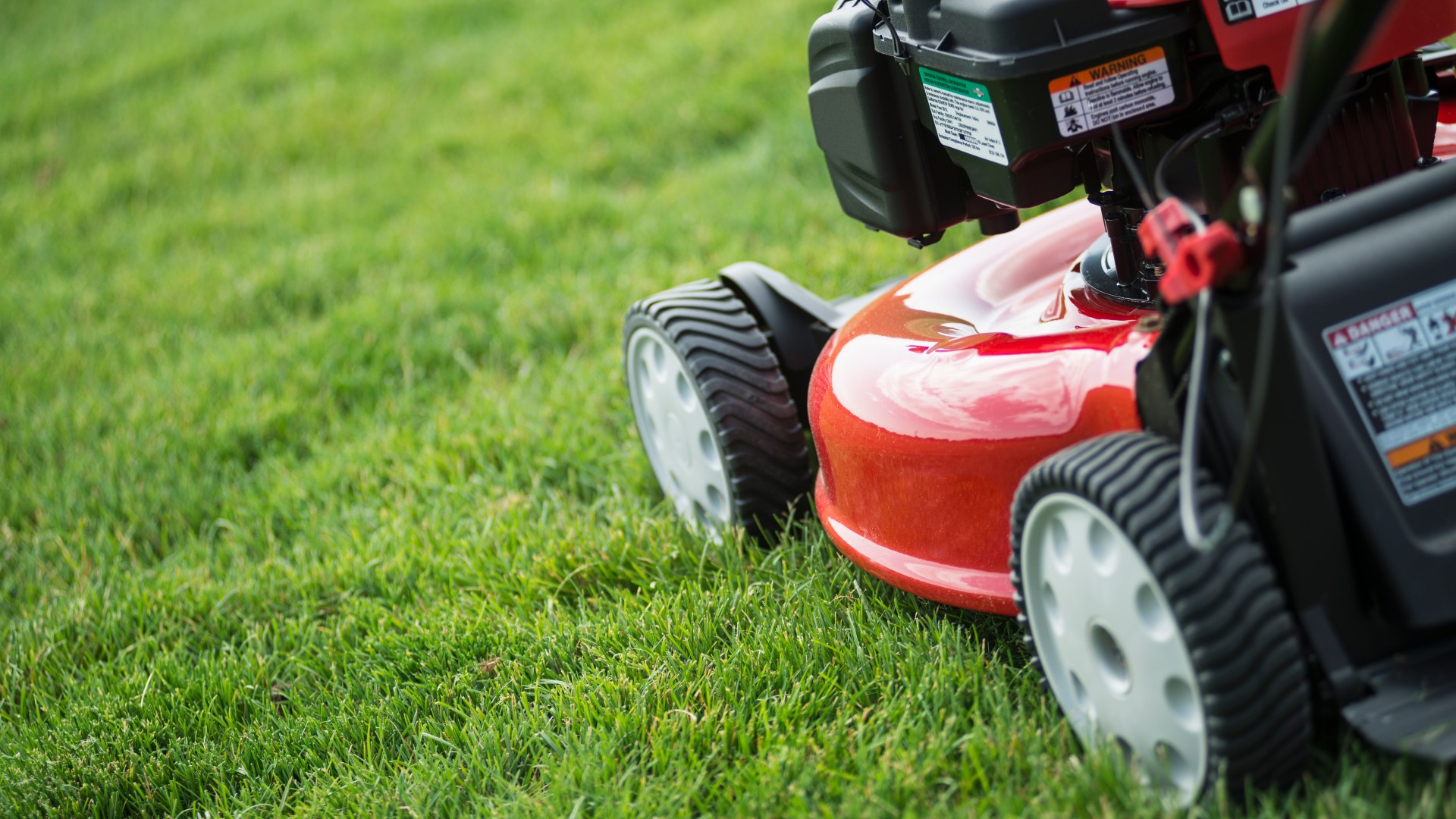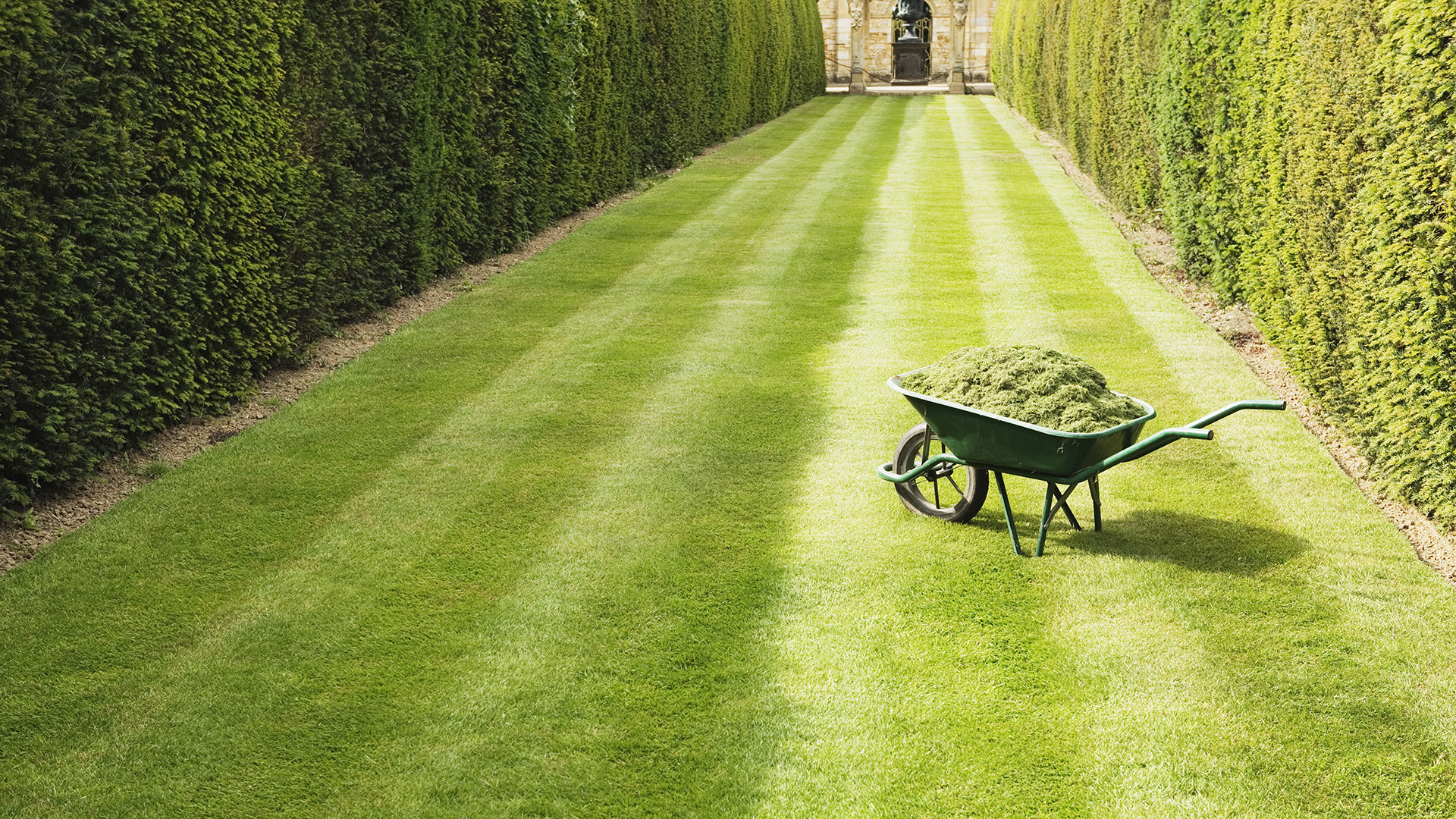Want to add an element of luxury to your garden? Lawn stripes are an elegant way to elevate your outside space, but do you know how to mow stripes in your lawn? While they might initially look a little intimidating, you can learn how to mow stripes pretty easily.
Thanks to the help of the best gas lawn mowers or the best electric lawn mowers, depending on which type is most suited to you, you can stripe your lawn in a jiffy. And for those with one of the best rider lawn mowers, you’ll be able to pattern your larger space from behind the driving wheel, and survey your work on a loop around your yard when you’re all done.
Lawn care is central to the art of creating lawn stripes, as, without well-tended grass, you won’t have the correct canvas to get started on. So what’s the trick to getting your space well-prepped? Don’t cut your lawn too short, as you won’t be able to create patches of varying lengths successfully later on. If you’re still on the lookout for a suitable appliance to help you keep a grip on your garden, then check out our latest cheap lawn mower deals.
How to mow stripes in your lawn
You can create lawn stripes in your grass by effectively bending the blades of grass in different directions so that sunlight bounces off the grass blades to show stripes. For this reason, certain types of grass make more effective stripes than others. In particular, cool season grasses such as ryegrass and Kentucky Bluegrass will be better for creating a striped lawn.
That’s not to say you can’t create lawn stripes with a warm season grass, you just won’t be able to achieve lines that are as crisp. This is because warm season grasses aren’t as flexible and bendy.
The real secret to creating a striped lawn is to cut the grass in different directions throughout the length of your garden. You'll also want to ensure that the grass is cut at even height so that some blades of grass don’t get overshadowed by others.

It’s really important not to cut your grass too short as this will damage the grass and also make the blades of grass more rigid. The longer the grass, the more flexible the blades are. To find the best height for your grass, head to our feature on how to cut your lawn to the best height.
Lots of lawn mowers now have built-in rollers that will gently flatten the grass while you mow it, but the main thing to remember is not to leave huge gaps between each time you cut your lawn, and not be tempted to cut it too short!
You can also buy a separate lawn roller to help flatten the grass effectively if your current mower doesn’t have one.
When you start mowing your lawn to create your very first stripe, try to follow and edge or border to keep you in a straight line. It’s also worth remembering to lift the mower blades at the end of your row before turning the mower and starting your next row back in the direction you came from.
Finally, after you’ve achieved some stripes on your lawn for a few weeks, switch up the direction of your stripes to keep the grass bending.
Additional tips when creating lawn stripes
So, now you’re armed with the information you need to create lawn stripes, there are some additional tips that might make the process easier. The first tip would be to plot the section of land that you want to stripe out, just by using a simple diagram, so that the whole thing is clear in your head. This will take you a couple of minutes with a pencil and some paper, but will probably stop you from getting confused when you’re out there mowing.
The other thing to be conscious of is how your mower is performing while creating the stripes. To prevent any clogging or malfunctioning, regularly empty your mower’s clippings so that your pattern comes out as smooth as possible. And if you’re a real perfectionist, make the straight lines of your stripes stand out with one of the best lawn edgers and get an ultra-polished look.
Discover more guides for the garden…
Best pool heaters
Best swim spas
Best water heaters
Best patio heaters
Best hot tubs

